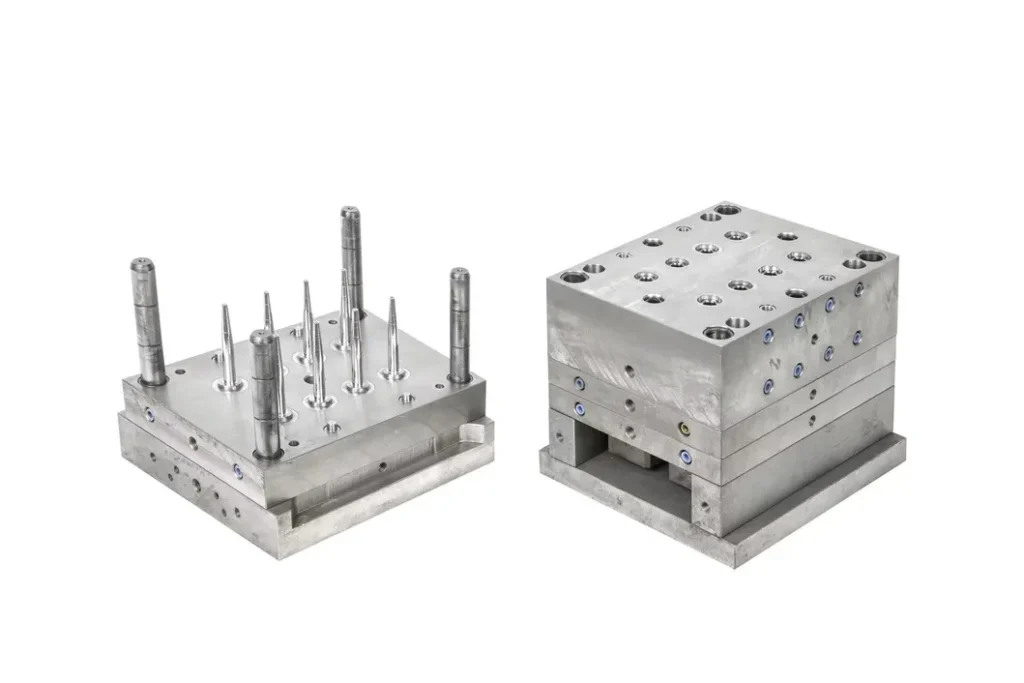The cost of producing precision molds for medical devices is influenced by several key factors, each playing a critical role in determining the final price of mold creation and production. Medical injection molding requires a high level of expertise, technology, and material selection to ensure compliance with stringent regulatory requirements and to meet the complex needs of healthcare devices. Below is an overview of the main factors influencing mold specialist costs for precision medical molds.
Complexity of the Mold Design
One of the most significant factors in determining the cost of precision mold medical is the complexity of the mold design. Molds used in medical device manufacturing often have intricate features that require advanced engineering and specialized production processes.
- Intricate Features: Medical molds are frequently designed to accommodate highly detailed and precise components, such as microfluidic channels, small mechanical parts, and multi-cavity designs. These features require advanced tools and techniques, such as micromachining, multi-shot molding, and precision EDM (Electrical Discharge Machining), all of which can increase the cost of mold creation.
- Customization: Customized molds for unique or specialized medical devices often require more time and expertise in both design and prototyping, contributing to higher costs. The custom nature of these molds also means they may not be used for large volumes of production, further justifying the increased price.
Material Selection
The choice of materials used in precision molds is another crucial determinant of the overall cost. In medical molding, it’s essential to select materials that meet biocompatibility and regulatory standards, and this can come at a premium.
- Medical-Grade Materials: Materials such as medical-grade silicone, biocompatible plastics (e.g., polycarbonate, PEEK), and specialty alloys (e.g., titanium) are often used in medical molds. These materials tend to be more expensive than standard industrial-grade materials due to their specific properties required for medical applications, such as resistance to sterilization and chemical stability.
- Mold Steel Quality: The quality of the mold base and cavity steel, such as ASSAB or H13 steel, plays a major role in mold durability and longevity. Higher-quality steels, which ensure molds can withstand multiple cycles without significant wear, are often more expensive but necessary for high-precision molding applications in the medical industry.
- Mold Coatings and Surface Treatments: Additional surface treatments like electroplating, hardening, and coating are sometimes applied to enhance mold performance, especially when molding medical-grade materials. These coatings help reduce wear and improve the mold’s lifespan, but they also contribute to higher production costs.
Mold Size and Complexity
The size of the mold directly influences both the materials and the manufacturing processes involved in creating it. Larger molds require more resources and greater time investment to produce and maintain.
- Larger Molds: Molds for larger medical components, such as diagnostic devices, implantable devices, or complex assemblies, tend to cost more due to their increased material and production demands. Larger molds typically require larger injection molding machines, more energy for production, and more time for precision adjustments and quality checks.
- Multi-Cavity Molds: Multi-cavity molds, which can produce multiple parts simultaneously, are often used for high-volume medical device production. While multi-cavity molds can reduce per-part costs, they are also more complex to design and manufacture, requiring higher initial investments in engineering and tooling. Additionally, any defects in multi-cavity molds can have a more significant impact on production costs and output.
Tooling and Engineering Time
Creating precision molds for medical devices requires significant engineering time and expertise. The process involves multiple stages, including designing the mold, prototyping, testing, and refining.
- Design Time: Experienced mold engineers use advanced CAD and CAE (Computer-Aided Engineering) software to create detailed 3D models and simulations of the mold before physical manufacturing. The design process for medical molds is typically more time-consuming due to the need for high precision and regulatory compliance, which increases the overall cost.
- Prototyping: Before full-scale production begins, prototyping is essential to ensure the mold works as intended. Prototyping allows manufacturers to identify any design flaws and make necessary adjustments. Prototypes are often tested for functionality, durability, and compliance with regulatory standards, further contributing to the cost of mold creation.
Regulatory Compliance and Certification
Medical molds are required to comply with strict industry standards, such as ISO 13485, FDA, and other global regulatory frameworks. Compliance with these regulations requires additional documentation, certifications, and testing, which adds to the cost.
- FDA and ISO Compliance: Medical devices must meet rigorous standards to ensure they are safe and effective for patient use. This includes maintaining strict traceability of materials, quality control processes, and testing procedures. Meeting these standards requires additional time and resources, including specialized inspections and certifications.
- Validation and Testing: Molds for medical devices must undergo extensive testing and validation to confirm that they meet all the required regulatory standards, including material validation, sterilization validation, and performance testing. These testing processes can add considerable costs, particularly for molds used in critical applications such as implants or surgical tools.
Production Volume and Lifecycle Costs
The overall cost of precision molds also depends on the expected production volume and the mold’s lifespan. High-volume production often brings per-unit costs down, but the initial mold costs for medical applications can still be high due to the need for precision and specialized materials.
- Low-Volume vs. High-Volume Production: For lower-volume medical device production, the cost per unit can be higher due to the increased cost of mold creation, which is amortized over a smaller production run. However, for higher-volume production runs, the cost per part can be significantly reduced, as the fixed costs of mold creation are spread over a larger number of units.
- Mold Lifespan and Maintenance: Precision molds used for medical devices often have long lifecycles. However, to maintain the precision required for medical applications, molds must undergo regular maintenance, repairs, and sometimes restoration. These maintenance costs should also be factored into the total financial investment.
Technological Advances and Automation
Advanced technologies, including automation, AI, and robotics, are increasingly used to enhance mold production and reduce costs. Automation allows for faster, more precise mold production, reducing errors and labor costs.
- Automation: Automation improves efficiency and consistency in mold creation and production. Automated systems can help optimize parameters such as injection speed, pressure, and temperature, reducing human error and ensuring precise outcomes. However, integrating these systems into the production process can require a significant upfront investment.
- AI and Data Analytics: AI and data analytics play an important role in improving mold efficiency and predicting potential defects before they occur. These technologies allow manufacturers to optimize mold designs, detect issues early in the production cycle, and improve overall product quality, though they come with an added cost.
Financial Implications of Investing in High-Quality Precision Molds for Medical Applications
Investing in high-quality precision molds for medical applications may seem costly upfront, but the long-term benefits make it a worthwhile investment. High-quality molds lead to better product consistency, higher yields, and fewer defects, which ultimately translate into lower rework costs and reduced product recalls.
Additionally, high-quality molds ensure compliance with industry standards, avoiding the risk of regulatory fines or safety issues that could arise from defective medical devices. The cost savings over time, resulting from higher efficiency, longer mold life, and reduced product defects, can far outweigh the initial investment in premium-quality molds.






